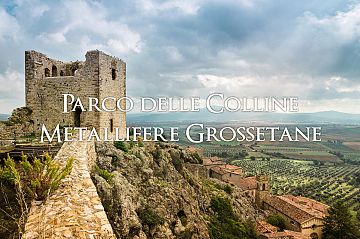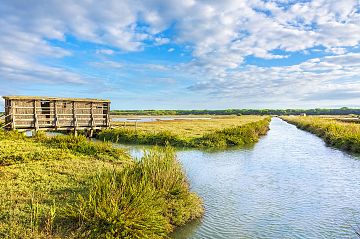Vetulonia: the ancient lost city
- Category Art History and Culture
Vetulonia: What to see, the history, useful info, timetables and prices
Number of views: 6245Agriturismo - Where to stay overnight
Vetulonia was a powerful and ancient Etruscan city of the Dodecapoli, whose traces had been completely lost until 1840. Today it is a picturesque village of the Maremma with an interesting archaeological area.
Vetulonia: Historical Notes
For centuries the city of Vetulonia has been a mythological Etruscan town, an economic, political and artistic power of that time, whose traces, however, had been completely lost, as if it had disappeared into thin air. But during the archaeological excavations carried out in Cerveteri between 1840 and 1846, the base of the statue of Claudius emerged, on which three deities were carved as a symbol of three important Etruscan peoples: the people of Tarquinia, that of Vulci and that of Vetulonia.
The discovery obviously served as an incentive for the continuation of the research and over the years several Etruscan finds came to light.
Furthermore, it was concluded that Colonna di Buriano (background of archaeological research near Vetulonia) and Vetulonia ancient itself, were actually the same city.
Thus, on July 22, 1887, the king of Italy Umberto I reassigned Colonna di Buriano the ancient name of Vetulonia.
The city of Vetulonia was located on the north-western shore of Lake Prile, opposite from the other Etruscan center of Roselle, located on the oriental shore.
In fact, Vetulonia was a marine city, a flourishing commercial center, with numerous goldsmith workshops capable of making jewels of incredible refinement and beauty.
Vetulonia had become a power thanks to the exploitation of the metallic hills and the Island of Elba and thanks to the control of the sea and land trade routes.
Following the conquest by the Roman people, the city progressively lost its importance. During the Middle Ages, following the barbarian invasions, it fell into oblivion to the point of losing its name: in fact for centuries, it was referred to as Colonna di Buriano.
What to see in Vetulonia
A visit to Vetulonia can begin with the monumental Etruscan tombs located at the foot of the hill that houses the city.
The Tomba del Belvedere and the Tomb of Pietrera are immediately visible. Continuing along the via dei sepolcri you will find the Tomb of the little devil II and finally the Tomb of the Golden Fibula.
These tombs date back to the VII - VI century. BC and contained masterpieces of goldsmithing, oriental vases, helmets, greaves, chariots, shields, spears, statues, golden and silver coins found during the excavations.
During the sixth century. B.C. numerous small satellite settlements of Vetulonia arose throughout the Bruna valley, among these, the one near Lago dell'Accesa is particularly interesting, the only settlement to have returned also the ancient, inhabited nucleus.
Vetulonia: Timetables and Prices
Hours:
The MuVet and the Archaeological Area of Poggiarello Renzetti-Scavi Città follow the timetable below:
1 November – 31 March
10:00 – 16:00 from Tuesday to Sunday. Open on bank holiday Mondays. Closed on December 25th and 26th, January 1st.
1 April – 15 June
10.00 – 18.00 from Tuesday to Sunday. Open on bank holiday Mondays
June 16 – September 15
10.00 – 14.00; 15.00 – 19.00 from Tuesday to Sunday. Open on bank holiday Mondays
16 September – 31 October
10.00 – 18.00 from Tuesday to Sunday. Open on bank holiday Mondays.
Prices:
The only entrance subject to payment is the one in the Museum.
- € 5.00 full price
- € 2.50 reduced for under eighteens and over sixties, university students up to twenty-five, residents of the Municipality of Castiglione della Pescaia, people with disabilities, military personnel
- Free admission for children under six, teachers with school groups
























